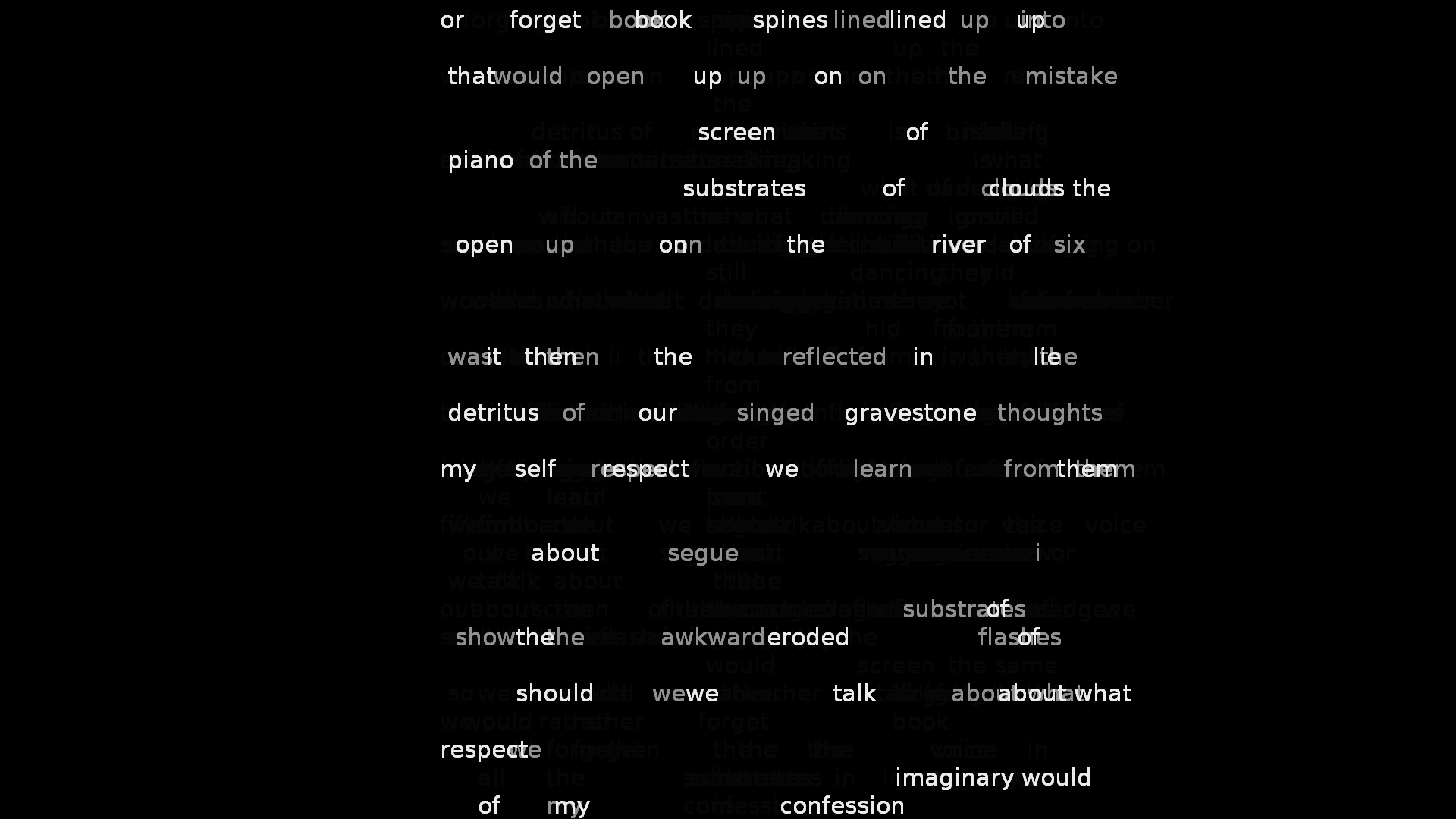emergent

Summary
Medium: Animated 2D text via custom Python software using electroencephalograph (EEG) data
Status: Complete (2015)
Presentation/Publication history: Brown University Digital Language Arts presentations (2015)
Description
One of the most startling phenomena in the study of statistical mechanics is that of self-assembly. From basic crystal formation to the spontaneous assembly of viral capsids, self-assembly consistently violates common-sense understanding of the way the world ought to work. Looking at the iflaviridae capsid, one might think it about as likely to spontaneously build itself from constituent parts as a teacup is to jump into being from broken shards. Yet such processes are vital to the emergence and sustenance of life.
In emergent, we consider the process of self-assembly in language and meaning rather than molecules. The defining feature of self-assembly is the development of complex organization from simple interactions, so emergent works with language at the level of bigrams, considering only which word should proceed or follow any given word. While such considerations are frequently used in linear Markov-generated texts, emergent uses these simple interactions to explore patterns of text on a 2D grid of language. With the additional constraint provided by vertical patterns within a text, the algorithm behind emergent could spontaneously reproduce large swathes of that text.
Rather than reproducing existing texts, however, emergent biases its patterns of interaction with other data. Specifically, the bigrams of emergent are weighted using simple EEG data collected while various readers examined texts related to emergent structures and behaviors. These data are then used to build up entirely new, shifting, and unstable patterns which form the readable surface of the work.
Issues of both authorship and readership are strongly at stake in this piece. If the ostensible author specifies only the simple interactions which lead to the assembly of a readable surface, then to what extent can he be credited as the creator of that surface? Furthermore, though readers assemble meaning through their own associative interaction with the text, emergent’s surface changes too rapidly for anyone to traverse its myriad possible readings before it has moved on to a new linguistic patterns. Neither the author nor the reader nor even the algorithm entirely controls what facets of the text are “read” in the most literal sense of the word. emergent is not a simple act of transmission from well-defined author to well-defined reader mediated by digital algorithm. Rather, it is an emergent phenomenon that develops out of an ongoing, cooperative act of creation and interpretation.
To View
You can view video documentation of emergent below: